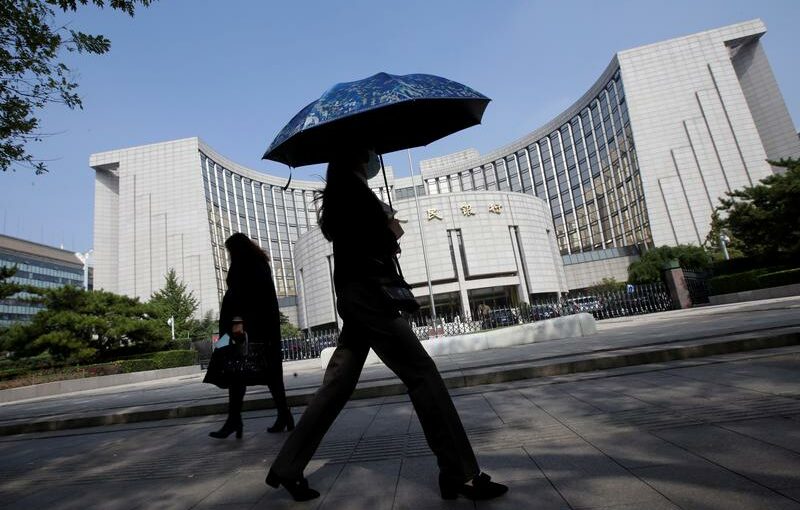BEIJING (Reuters) – China’s reforms to the way banks calculate deposit rates will help ease pressure on banks’ funding costs, although the impact on lenders and depositors will be limited, an industry body overseeing rates said on Monday.
The body said the previous practice of multiplying the benchmark rate had pushed up lenders’ overall funding costs as some used innovative products to lure deposits, prompting competitors raise long-term deposit rates.
From Monday, June 21, China will allow banks to set ceilings on deposit rates by adding basis points to the benchmark rate, a shift from the previous practice of multiplying the benchmark rate, the Self-Disciplinary Mechanism for the Pricing of Market-Oriented Interest Rates said.
Ceilings on banks’ deposit rates with maturities of more than one year have declined following the reforms, while ceilings on banks’ time deposit rates with maturities of six months or less have risen, according to the body, which is supervised by the People’s Bank of China (PBOC).
“The new scheme eliminates the leverage effect, and the gap between long-term and short-term deposit rates will be narrowed, which is conducive to guiding bank deposits to return to a reasonable term structure,” the industry body said.
Sources have told Reuters that China plans to reform the way banks calculate deposit rates, setting new ceilings of up to 75 basis points above the benchmark rate for some lenders.
All banks will be allowed to add up to 20 basis points (bps) to the benchmark rate on demand deposits and small Chinese banks and foreign banks will be permitted to add up to 75 bps to the benchmark rate on time deposit rates, the sources said.
The deposit rate reform will help banks keep a reasonable interest margin and profitability, which will be “crucial for ensuring banks’ continuous credit supply to the real economy”, analysts at China Securities said in a note.
On Monday, the PBOC kept its benchmark lending rate, the loan prime rate (LPR), unchanged for the 14th straight month at its June fixing. The one-year loan prime rate (LPR) was kept at 3.85%.
A reasonable margin between deposit rates of small- and medium-sized banks and those of state-owned banks will be conducive to maintaining the current relatively balanced market competition environment, the industry body said.
In October 2015, the PBOC scrapped the ceiling on bank deposit rates, which are still constrained by its window guidance and pricing mechanism. The PBOC has kept the one-year benchmark deposit rate unchanged at 1.5% since then.
Some Shenzhen banks have lowered their deposit rates, said the Shenzhen Special Zone Daily on Monday, following interest rate reform meetings held in Beijing. The paper cited unnamed sources.
Source: Read Full Article
